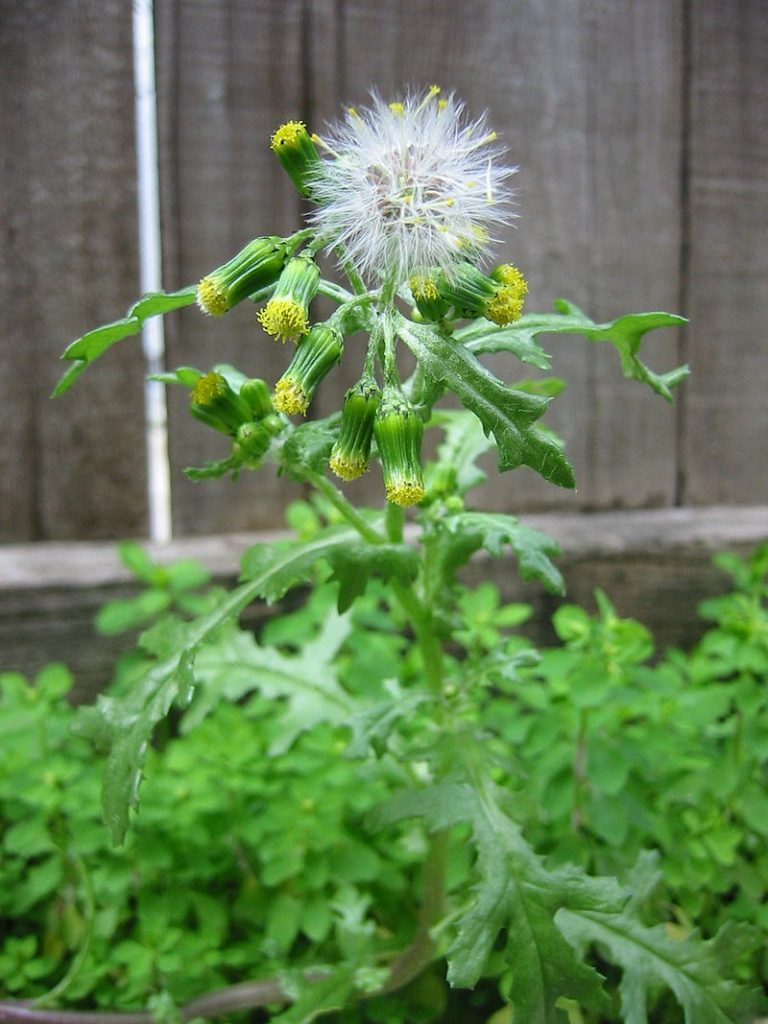
Common groundsel is a summer annual and a member of the aster family, Asteraceae, that also includes daisy, dandelion, and lettuce. it is native to Europe, northern Asia, and parts of North Africa, and may be native to the US. If not native to the US, it was brought there by early settlers and now occurs in all fifty states. Although it prefers full sun and moist fertile soils, it will grow in a variety of soils and is found in waste areas, pavement cracks, gardens, lawns, orchards, vineyards, roadsides and other disturbed sites. Photo Credit carol Wikimedia Commons
Description: Growing from a shallow taproot, common groundsel is five to eighteen inches tall and has an erect heavily branched stem that is hallow and often purplish at the base. The leaves are alternate, lobed and toothed, lack petioles and are two to four inches long. Flower heads are 1/4″ wide and appear in terminal clusters beginning in spring and consist of yellow disc flowers with conspicuous blackish tipped bracts. Plants begin blooming when five weeks old and bloom for about three to four weeks. When mature, the flower heads give way to puffy 1/2″ wide seed heads that resemble those of dandelions. A single plant can produce up to a million seeds that are viable for up to three years but usually for just one. Plants spread by seed.
Control: Cover the area with a coarse mulch three inches thick to inhibit germination. Pull or hoe seedlings as they appear, usually in spring and fall rather than in summer. Pull, cut, or mow older plants before seed set. There are no preemergent herbicides available to homeowners to control groundsel; glyphosate can be used but care must be taken to avoid contact with desirable plants.